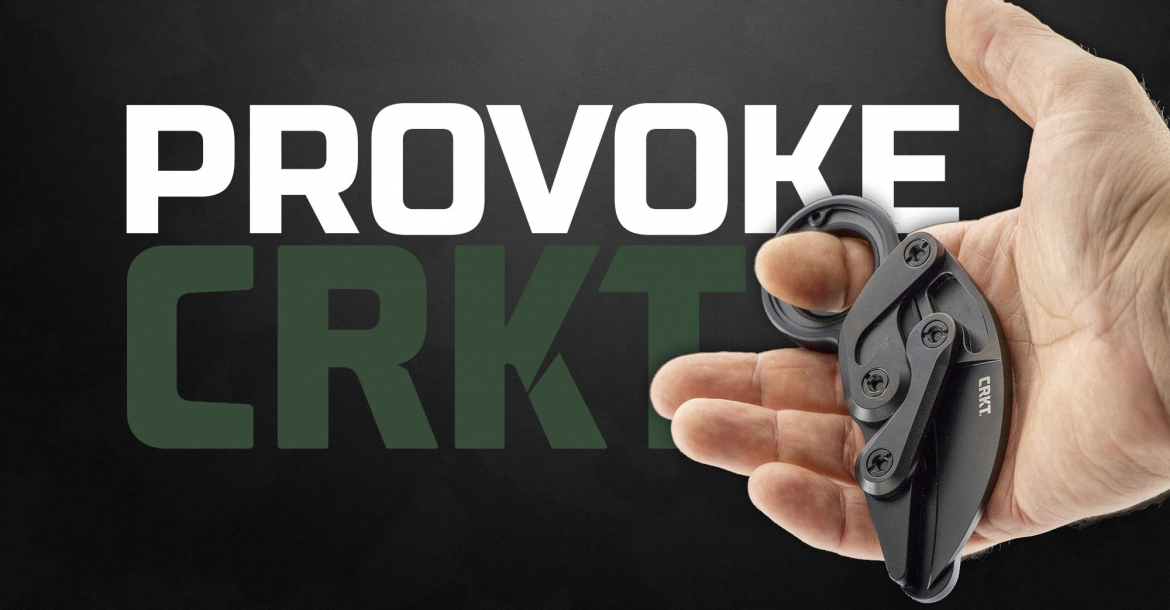CRKT Provoke, the "kinematic" Karambit
Among the hottest new items from CRKT, the Provoke is a karambit knife with a couple of new tricks up its sleeve
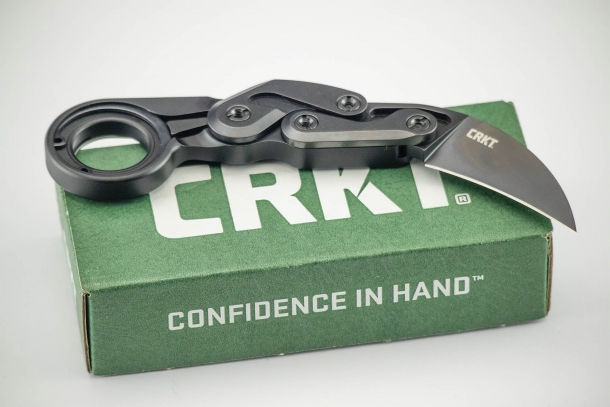
Karambit knives have been popular among martial artists worldwide for decades, and are considered among the best self defense knives. The origin of the karambit knife, as it often happens with martial arts weapons, is veiled by the mists of legend, but most probably is to be found in ancient agricultural implements used in south-east Asia by peasants to plant and harvest rice: a sickle like device with a ring that allowed its owner to conveniently dangle it by a finger while using both hands to work, without the risk of losing it in the mud of a rice paddy.
Given its talon-like blade effectiveness as a weapon, it does not surprise that it got soon weaponized and that several specific fighting styles evolved around it.
There are many karambit knives models on the market, both fixed blade and folders, the latter having a distinct advantage in terms of ease of carry: but all other folding knives house their blades in the handle, and deploy it by pivoting it around a stud. You may find karambit folders in the usual choice of locking system, but none is like the Provoke, which solves the problem of deploying the blade with a very peculiar approach.
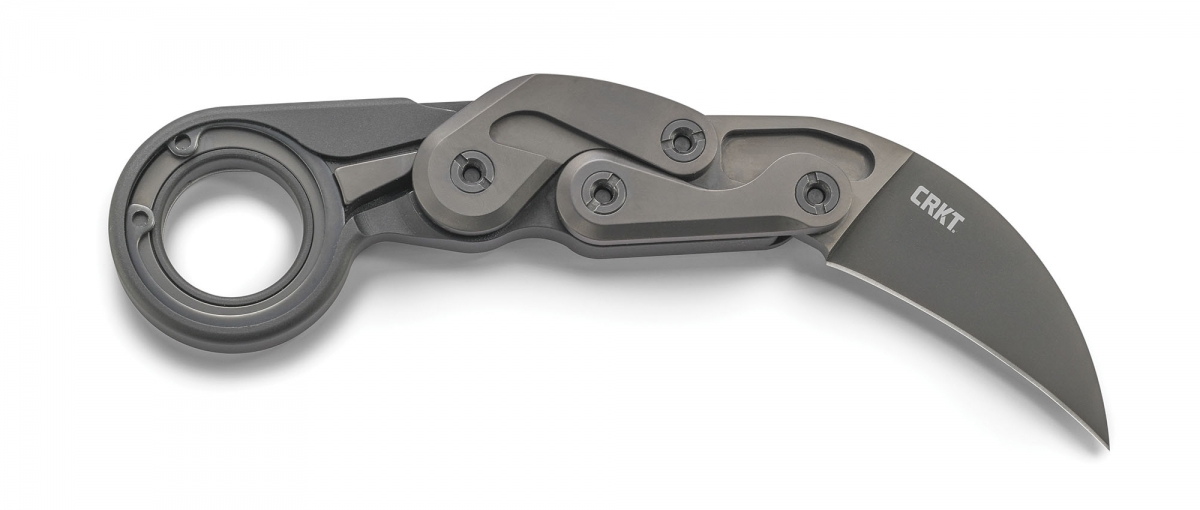
The CRKT Provoke is defined as a "Kinematic Morphing Karambit Knife"
The CRKT Provoke, designed by Joe Caswell of Caswell Knives and manufactured by CRKT, stores and deploys the blade more like a big feline’s claw thanks to the patented Kinematic system: in carrying position it’s retracted back, the edge shielded by the CNC machined, 6061 alloy, black anodized aluminum grip.
By gripping the knife with the index finger in the fat loop the closed knife can be used as a striker (think of it as a one-ring brass knuckle) or kubotan without any fear of unwanted opening. Yet, differently from all other knives, it allows immediate deployment of the blade should the need arise.
At a simple push of your thumb on the heel, the D2, nitride coated blade shifts forward by means of a mechanism consisting of two CNC machined steel “legs”, four axles, the grip and blade, all forming a sort of parallelogram.
A spring loaded latch pushes on a cammed profile in the rearmost “leg” keeping the knife closed and, when the blade is fully protracted, it snaps into a dent in the same cam to firmly lock it in the open position.

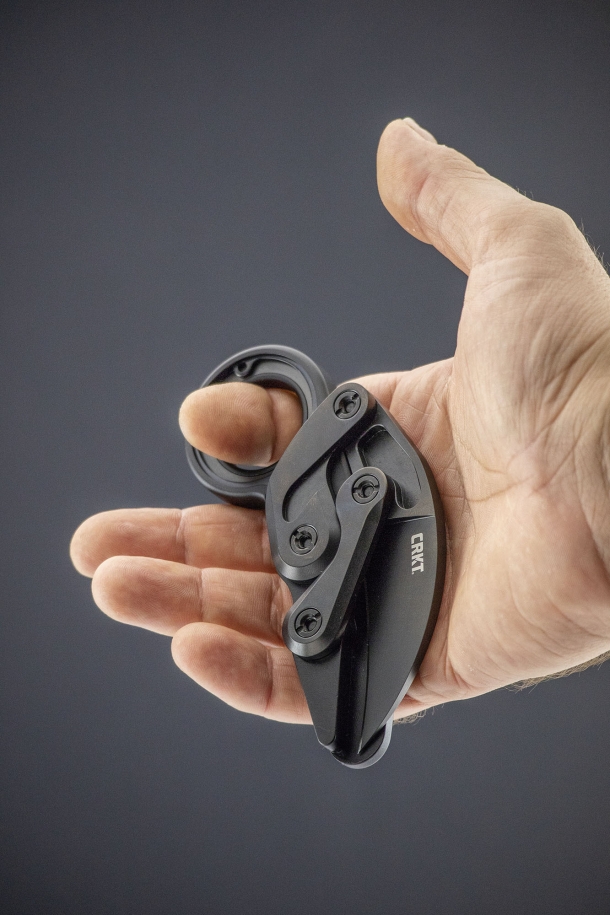


The whole operation is lightning fast, utterly instinctive (just by gripping the knife you understand how it has to be opened and you may very well say it has a zero time learning curve) and, unlike other one-handed flip opening systems, doesn’t rely on blade inertia to reach the open position.
Relying on inertia may cause lint, dust or insufficient lubrication to slow down the blade which stops in a half-open position, and it requires fine motor skills that get lost under high stress so that many experts, such as Doug Marcaida, suggest always using both hands anyway to open a folding knife in a self defense situation, disregarding other speed opening systems available. This is not an issue with the Provoke.
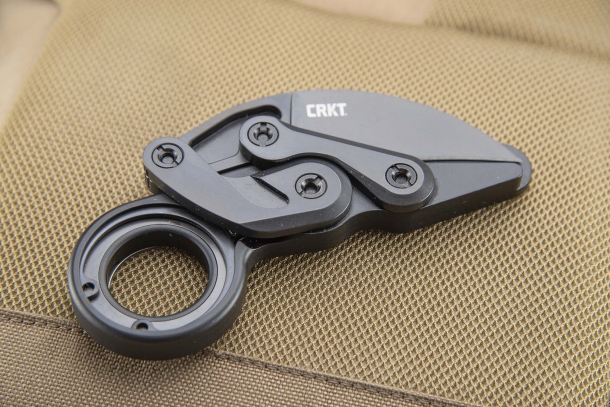

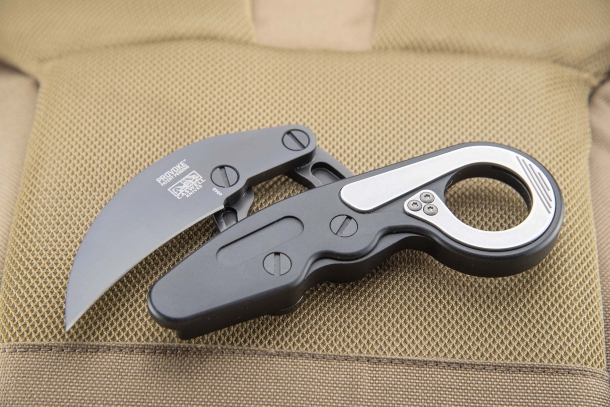
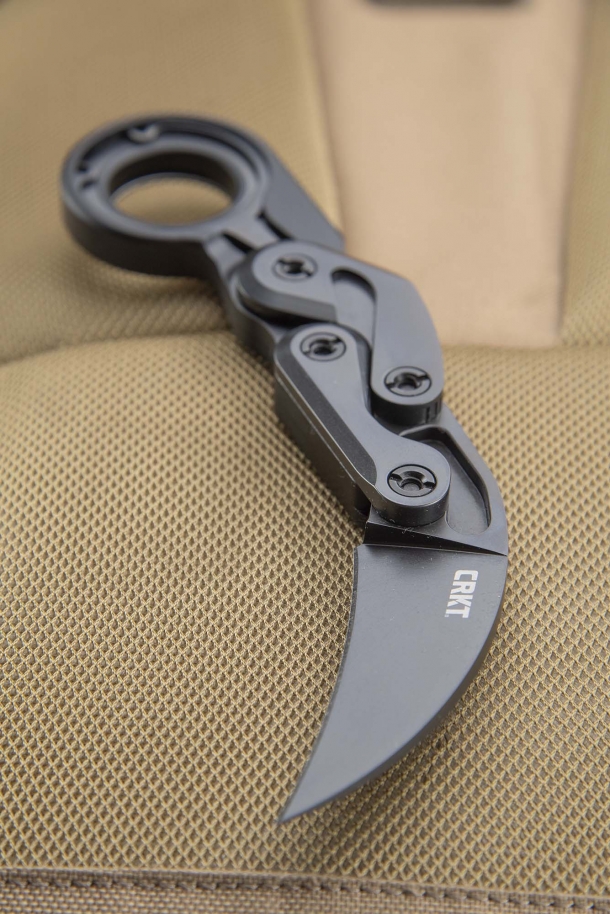
The blade may be flicked open by making a whipping movement with your wrist while holding the knife by the ring, but I’d advise against such a practice, as it’s needlessly hard on the mechanism, while pushing with your thumb on the blade’s heel is just as easy and much more reliable.
The peculiar design of the two “legs” makes so that they come to form part of the grip when the blade is deployed and that it’s practically impossible for the blade to retract while the knife is gripped, even in case of a lock failure.
To store the blade back into the retracted position, you have to use both hands, lifting the latch with the middle finger and using the other hand to put the blade back into its resting position.
It’s possible to do it one handed, by changing grip, actuating the latch with your thumb and using a flip to ease the blade towards the closed position, completing the movement with your thumb on the rearmost leg, but it’s awkward and impractical.
A flat clip on the back of the knife rests inside the ring for a flat profile and can be made to protrude slightly by pressing on a section which is finely lined to offer a tactile reference.
The clip offers a very deep carry position, with minimum part of the grip protruding from the pocket.
The whole knife has a very futuristic look, and wouldn’t cut a poor figure in a science fiction movie, or as the “bat-knife”.
Is it the knife to end all other knives? of course no.
First and foremost, we must understand that the Provoke is a very specialized tool, designed with one purpose in mind: personal defense. And as it often happens in such cases, while it serves its purpose excellently, it’s not so well suited to other tasks.
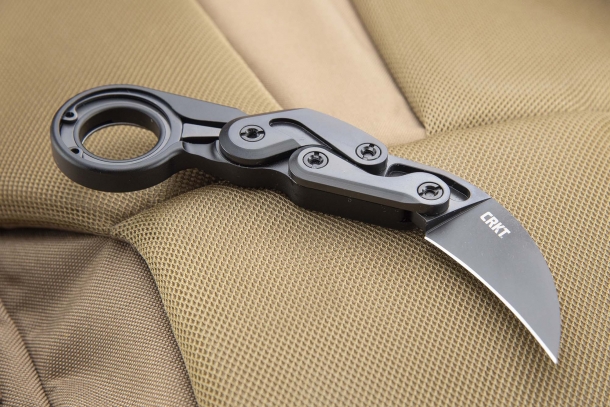

Even supposing to use a self-defense device as a "daily tool", the Provoke will not be practcal (would you use your carry handgun as a hammer to hang a picture? or the CO2 fire extinguisher you keep in the garage for your safety just to cool a sixpack?)..
Yes, the talon-like blade is very effective for specific daily chores, but it shows its limits when it comes to cut in more traditional ways.
The blade deploying system is perfect for the underhand grip used in many martial arts, but deploying the blade in other positions is not as practical (or becomes even dangerous).
Moreover, the CRKT Provoke is quite cumbersome as an EDC tool when compared with other knives with the same edge length.
While coming with a very smart clip, it’s also not well suited for carrying in a pocket, as the peculiar system may lead to undesired deploying of the blade, particularly when extracting the knife from the pocket, and the clawlike blade may rip the fabric of your trousers (in the best of cases…)
As a matter of fact, Crkt provides a kydex sheath for the Provoke that constitutes a far more adviceable way of carrying it.
Finally comes the steep retail price, fully justified in a defensive implement by the attention that went into ergonomics, the excellent manifacture and the degree of finish, but which comes as a little bit high for a simple daily cutting implement.
EDITOR'S NOTE
While the Provoke can be fully disassembled, it's best to avoid it unless you have to do some serious maintenance, as it requires some specialized tools and the whole assembly requires some care torqueing the screws and positioning the various parts.

